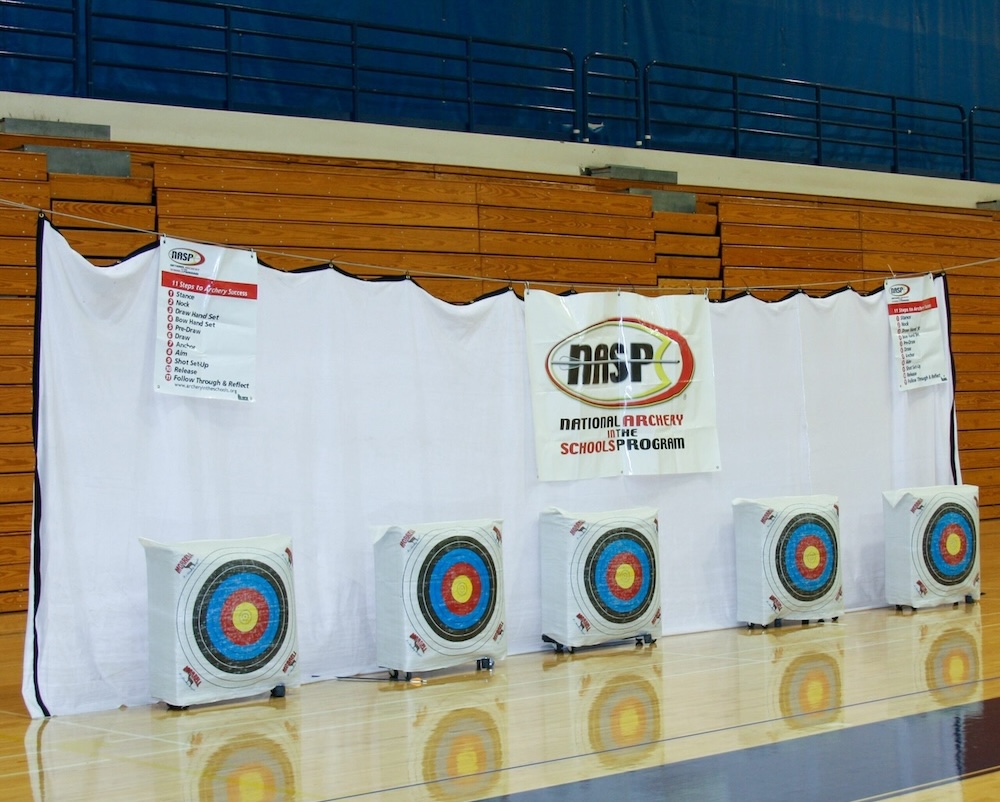One of the great things about archery is that you can practice it in your own backyard if you have the space. As long as you have a clear shooting lane, are not aiming toward another house or a public space like a street, and you have some kind of barrier behind the target, you can enjoy archery in your backyard. Here’s how to make a target stand and backstop to maximize the enjoyment.
DIY Target Stands
You can make your own target stand from wood or PVC pipe. Construct the base and a square frame for the target to hang from. Add hooks to the top bar of the frame to hang the target. Bag targets will usually come with loops on the top corners so you can hang them from the hooks. For field point practice with most vertical bows, you can use any bag target found at your local archery range or on an archery manufacturer’s website.
If you’re looking for a traditional round target, you can cut a section of ethafoam down to the right size and place a classic 10-ring archery target cover over it. For a circular target, you can use a tripod-style stand (which can also be built from PVC pipe or wood) rather than a square frame.
A Guide to Safety
The ATA created a series of three Archery Range Guides to teach archery ranges and communities how to build their own ranges, including the regulations, materials and so forth. The guidelines are designed for archery ranges at places like retail shops and state agency-owned properties, but elements of the Temporary Range Guide document could easily apply to an at-home range. The guide provides recommendations to minimize the risk of injury with safety barriers and buffer zones.
Safety Barriers
Safety barriers are backstops positioned behind the targets to catch stray arrows or arrows that shoot through the target. Safety barriers can include items that are thick or strong enough to stop an arrow. Arrow safety nets, thick foam play mats or yoga mats, and hay bales are examples of potential backstops.
Hay Bales
Hay bales are a great inexpensive option for a DIY backstop. The hay won’t be as harsh on your arrows as other materials. Make sure you’re keeping an eye on the hay and rearranging it to fill in any gaps or holes the arrows create.
Foam Mats
Archers can also use foam mats as a backstop. The foam is pliable enough to cushion the landing of the arrow, but thick enough to stop it from going through. You can use a children’s play mat, a yoga mat or a horse stall mat.
Netting: Archers With a Lower Draw Weight

Archers who use a bow with a draw weight of less than 30 pounds and arrows with a large diameter can use safety netting. This is only recommended for archers with a lower draw weight because a faster arrow could still go through the netting. A lower draw weight won’t launch the arrows fast enough to go through the netting. The net can be hung 3 feet beyond your target and extend 5 to 10 feet to the side. Typical netting is made of Kevlar and is 8 feet, 3 inches in height. Netting should be loosely hung on well-secured metal or wooden posts. Wind and sun will cause netting to deteriorate, so if your range is outdoors, keep an eye on the net and don’t use it for an extended period of time. Alternatively, you can bring your net inside between sessions.
Safety Buffers

An archery safety buffer zone is also known as the “cone of safety.” This area, which surrounds the shooting lane and target, should not be accessed by anyone while arrows are being shot. The cone size is determined by the distance from the shooting line to the target. The greater the distance, the greater the buffer zone should be.
Here are the ATA’s suggestions:
- For targets at distances less than 30 yards, use a 15-yard safety buffer to the side and 25 yards beyond the targets.
- For distances between 31 and 50 yards, use a 25-yard safety buffer to the side and beyond the targets.
- For distances longer than 50 yards, use a 25-yard safety buffer to the side and a buffer behind the target that is half the distance of the target. For example: If the target is placed at 80 yards, the safety buffer behind the target should be 40 yards away.
Set Up Your Own Range
Setting up your own archery range in your backyard is going to open up a whole new world of opportunity to practice and hone your archery skills. As long as you make sure you’re following safety precautions and being respectful of neighbors, the world is yours. You can make your entire archery setup from scratch if you’re a DIYer. If shopping in-store is more your style, visit your local archery range to get a target and stand. You can also buy them from archery manufacturers online.
Have fun!




